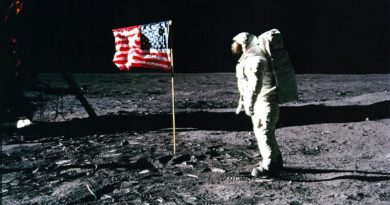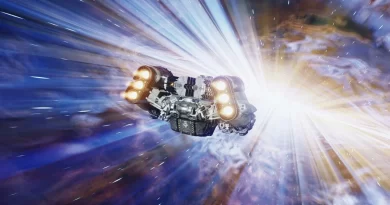50 years of Apollo mission: Was Moon landing fake? Here are the facts
Even fifty years after astronauts Neil Armstrong and Buzz Aldrin walked on the Moon, there are people who still insist that it never happened and that it was a hoax perpetrated by the US government.
On July 20, 1969, the Apollo 11 Mission landed two men on the Moon. Michael Collins and Buzz Aldrin piloted the lunar module, which detached from the spacecraft and landed on the Moon’s surface. Their commander, Neil Armstrong, became the first man on the Moon. He passed away in 2012 at the age of 82.
However, conspiracy theories that claimed that the moon landing was faked and that it was all a Hollywood-like cinematic production shot on Earth have been doing the rounds for decades.
The Associated Press recently listed the most common claims and the counters to them:
1) Claim: In the photos from the Moon, the American flag looks like it’s flapping in the wind. That would be impossible because there’s no air up on the Moon.
Fact: Instead of letting the American flag droop, the National Aeronautics and Space Administration (Nasa) had decided to use a right-angled rod to keep the flag spread out, Roger Launius, Nasa’s former chief historian, told AP. According to the report, Armstrong and Aldrin bent the rod a bit by accident, which made it look like the flag was in motion. Further, Launius told AP, the astronauts were worried the flagpole would fall down after they had twisted it into the ground, so they snapped the photos quickly, capturing the flag as it was still in motion.
ALSO READ: 50th anniversary of Apollo 11: How we came to know a lot about the Moon
2) Claim: No stars can be seen in the background of any photographs as Nasa knew that astronomers would be able to use them to figure out whether the photos were taken on the Earth or the Moon.
Fact: Astronomer Emily Drabek-Maunder, from the Royal Observatory Greenwich in London, told AP that the shutter speeds on the astronauts’ cameras were too fast to capture the stars’ faint light.
ALSO READ: Women yet to step on moon but well intertwined with it in literature
3) Claim: The lunar module didn’t scatter any dust and didn’t leave a crater from the rocket blast that slowed its descent when it descended onto the Moon’s surface
Fact: Drabek-Maunder told AP that while landing on the Moon, the module was traveling horizontally for some time, and so the thrusters weren’t pointed down and wouldn’t have kicked up dust. However, Drabek-Maunder added that when the module did finally touch down, “you can see dust actually being thrown up”.
ALSO READ: How big is moon and how far is it? Let’s put facts into perspective
Regarding the lack of craters, Launius told AP that the astronauts didn’t require a large blast to slow down because the Moon’s gravity is about one-sixth that of the Earth’s.
 Dear Reader,
Dear Reader,
Business Standard has always strived hard to provide up-to-date information and commentary on developments that are of interest to you and have wider political and economic implications for the country and the world. Your encouragement and constant feedback on how to improve our offering have only made our resolve and commitment to these ideals stronger. Even during these difficult times arising out of Covid-19, we continue to remain committed to keeping you informed and updated with credible news, authoritative views and incisive commentary on topical issues of relevance.
We, however, have a request.
As we battle the economic impact of the pandemic, we need your support even more, so that we can continue to offer you more quality content. Our subscription model has seen an encouraging response from many of you, who have subscribed to our online content. More subscription to our online content can only help us achieve the goals of offering you even better and more relevant content. We believe in free, fair and credible journalism. Your support through more subscriptions can help us practise the journalism to which we are committed.
Support quality journalism and subscribe to Business Standard.
Digital Editor
This article has been archived for your research. The original version from Business Standard can be found here.


